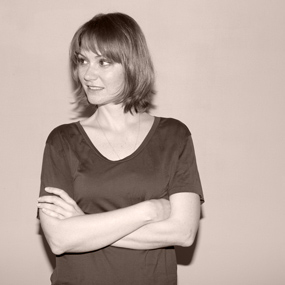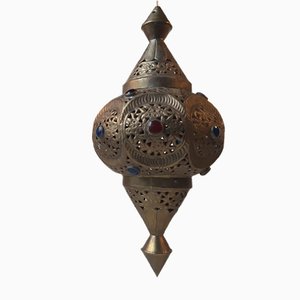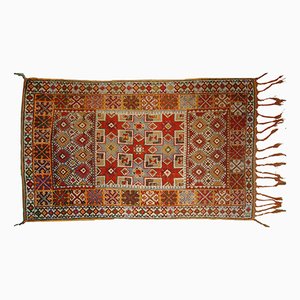Q&A with Berber carpet expert Gebhart Blazek
The Road To Morocco
Graz-based researcher and dealer Gebhart Blazek of Berber Arts is one of the world’s foremost experts in vintage Moroccan carpets. Since we're experiencing a textiles obsession this week, we took the opportunity to query Gebhart about the path that led him to such a high-level, specialized knowledge about the surprisingly modern-looking folk arts of Berber weavers.
WC: How did your passion for the carpets of Northern Africa begin?
GB: In fact, it’s been an infection in several steps. When the Moroccan Berber rugs first caught my attention—in an exhibition I saw in the early 1990s—it was quite a shock. The imagery of the rugs looked to me as if something from my childhood dreams had become real. That was about the same time when I started to work on documenting rural pottery productions in Tunisia, Algeria, and Morocco. Along the way, my interest in those regional weaving cultures grew continuously, and I started, at first, to buy the rugs for my own collection.
In 1994-95, I got an offer to give a lecture during the first conference on Moroccan rugs in Marrakesh. I chose as my subject the now famous Beni Ouarain rugs, which were then an almost completely ignored group in the market. (Hardly any dealer in the souks had them in stock since they thought those rugs were just too primitive.) After a successful lecture, I received several offers from specialized magazines and dealers, which gave me the opportunity to turn this personal passion into a professional endeavor.
WC: What is it about these pieces that makes them so unique, so special?
GB: Like any other weaving culture in the world, the Berber weavers are entrenched in a traditional framework that has been handed down from mother to daughter over the generations. But unlike any other culture, the weavers in Morocco's Berber societies—living in the most remote mountain and steppe regions—had an individual creative freedom that is incomparable, which in turn led to a folk artistic practice that has always been very particular to the region. And even more unusual—also unlike any other carpet producing region in the world—this practice is still alive today.
WC: In your experience, what attracts your clients to these pieces?
GB: It is this seemingly “modern,” or maybe seemingly “postmodern,” appeal that attracts most clients. Many of them come from creative professions, very well renowned architects and artists among them.
WC: Has the market for these pieces changed over the years?
GB: The market has changed dramatically since the early 1990s. While it was traditionally a knowledge-driven collectorship among a handful of specialists, over the past 15 years Moroccan rugs have become increasingly popular, more and more dominated by short-term fashions. Forgeries have become a serious issue, and solid connoisseurship has become a seriously rare resource. On the other hand, the market is more mature, with both positive and negative effects. For me personally, it is natural that one constantly has to reinvent oneself in changing environments.
WC: What has been your greatest find in your many research trips?
GB: My decision to focus on the Beni Ouarain as the subject of my conference lecture in Marrakech led me to numerous finds during my field research trips between 1994 and 2001. The light that has been shed on this group of carpets through my early activities is somehow comparable to a scenario in which a playing child throws a snowball that causes an avalanche. (That being said, I have to admit that I do not believe that I “discovered” the Beni Ouarain rugs, as they had already been quite popular in the 1930s among the architects of the modernist movement. It is more a sort of “rediscovery” after a certain period of low interest and ignorance of the market.)
A somewhat similar situation developed after I produced my first catalogue on the Boucherouite rag rugs in 2009, followed by an exhibition with Cavin-Morris Gallery, my partner gallery in New York, in June 2010. We got a large review in The New York Times, and afterward, with all of the U.S. press attention, these rugs became extremely popular.
Marketwise, these “finds” are certainly the most important. Emotionally more important, however, is the discovery of a formerly unknown group of ceremonial textiles of the Beni Ouarain. Or the discovery of a rug that has been found in a small church in Northern Spain that turned out to be probably the oldest known Moroccan rug (from the first half of the 18th century). Or another one that I discvovered with a friend in the dusty stock of a dealer in the NY rug district that turned out to be among the oldest known rugs from Algeria.
*All images courtesy of Berber Arts
-
Text by
-
Wava Carpenter
Après avoir étudié l'Histoire du Design, Wava a porté plusieurs chapeaux pour soutenir la culture du design: professeur d'études du design, organisatrice d'expositions, organisatrice de débats, rédactrice d'articles. Tout cela a façonné son travail en tant que Editrice en Chef chez Pamono.
-

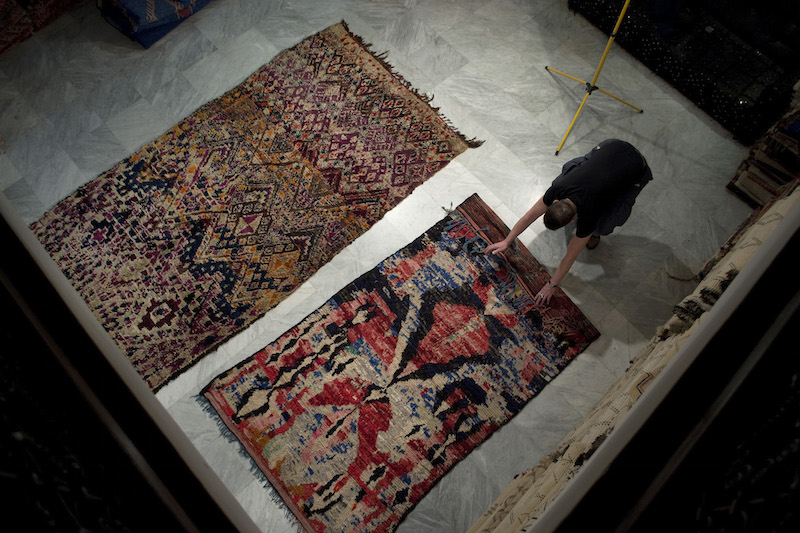 Gebhart photographing rugs in Marrakesh, 2011
Gebhart photographing rugs in Marrakesh, 2011
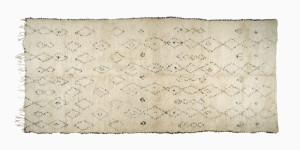 Bein Ouarain rug, North-Eastern Middle Atlas, ca. 1970-80
Bein Ouarain rug, North-Eastern Middle Atlas, ca. 1970-80
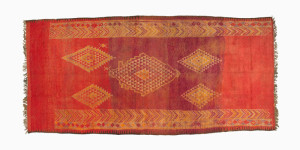 Ahmar, Haouz, Moroccan Central Plains, ca. 1920-30, ex-collection of Frank Hall
Ahmar, Haouz, Moroccan Central Plains, ca. 1920-30, ex-collection of Frank Hall
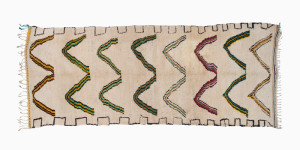 Rug from the Azilal region, Central High Atlas, Morocco, ca. 1980-90
Rug from the Azilal region, Central High Atlas, Morocco, ca. 1980-90
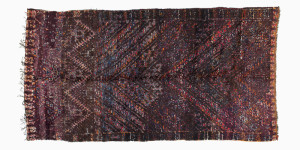 Beni Mguild, Central Middle Atlas, Morocco, ca. 1930-40
Beni Mguild, Central Middle Atlas, Morocco, ca. 1930-40
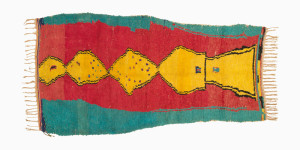 Rug from the Azilal region, Central High Atlas, Morocco, ca. 2000s
Rug from the Azilal region, Central High Atlas, Morocco, ca. 2000s
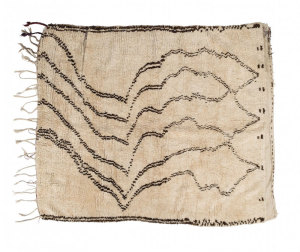 Rug from the Azilal region, Central High Atlas, Morocco, ca. 1980s
Rug from the Azilal region, Central High Atlas, Morocco, ca. 1980s
 Beni Mguild, Central Middle Atlas, Morocco, ca.1920-30
Beni Mguild, Central Middle Atlas, Morocco, ca.1920-30
 Gebhart Blazek (far left) on a field research trip, just after a successful rug acquisition, 2009
Gebhart Blazek (far left) on a field research trip, just after a successful rug acquisition, 2009
